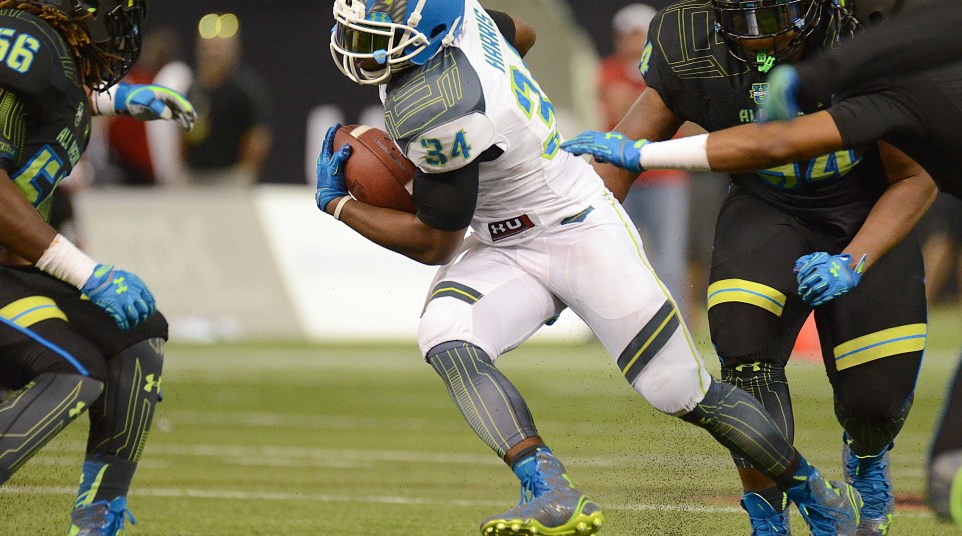How to assess the SEC's least-touted recruiting classes
There are exactly two weeks remaining until National Signing Day arrives, and once again the SEC is winning on the recruiting trail.
Eleven of the conference’s 14 teams rank in the top 30 in the FBS in the 247Sports industry composite recruiting rankings, meaning more than 75 percent of the conference ranks in the top 25 percent in the nation in recruiting.
To the naked eye, boasting a top 30 recruiting class would lead one to believe that the team in question is on the rise, and that if it can develop its talent properly it should be able to contend within the conference in the coming years.
But to the trained eye, that 30th-best class in the nation is not as attractive as it seems upon considering that same class ranks 11th in its own conference.
Let’s use Kentucky as an example, as it just so happens UK has the nation’s 30th best class and the SEC’s 11th best recruiting haul as of Jan. 21. For Kentucky to out-recruit three-fourths of the nation is impressive, especially considering how basketball-centric the school typically is.
The Wildcats are bringing in a higher class of talent than ever before, thanks to the efforts of Mark Stoops and Vince Marrow, which means they should start to win more games and remain more competitive in what has become a wide-open SEC East.
But UK plays two-thirds of its schedule in the SEC, where its class ranks near the bottom of the list. If UK were playing games against many of the teams it is out-recruiting, it might have a chance to flex its muscles and show just how improved the program is. But instead, it’ll play most of its games against the few schools bringing in better recruits on an annual basis, which doesn’t make UK’s climb from the bottom to the top of the SEC standings any easier.
Kentucky will have more talent than it ever has before, but it will still have less talent than many of its foes — a reality Kentucky has become far too familiar with.
And it’s not just Kentucky facing this issue in the SEC. Missouri, the two-time defending East champion, boasts the nation’s 33rd-best recruiting class while claiming the No. 12 class in the SEC. Arkansas, which finally snapped its SEC losing skid in 2014 despite finishing last in the SEC West, has the No. 24 recruiting class in the nation but the No. 10 class in the SEC.
For all of these teams, closing the year with a recruiting class in the top-fourth of the nation means that much less when compared to the other classes throughout the conference. The point being: a recruiting class is only as good as how it stacks up to the rest of a given team’s conference. FBS schedules are still heavily tilted toward in-conference games, meaning a team’s standing on the national landscape of college football is far less important than its standing within its conference.
However, it’s worth noting there is indeed a positive bringing in these touted classes, even if they don’t match up well with the conference’s elite. Kentucky’s No. 30 class may rank 11th in the SEC, but it’s much closer to the pack at No. 30 than it would be at No. 75, for example.
How a recruiting class fares depends heavily on the coaches tasked with developing that talent, and the fact that Kentucky’s class or Arkansas’ class are even in the ballpark with the rest of the conference gives both programs a chance to ascend if they can do a better job in player development than their foes.
If Missouri can get more out of its No. 33 class than South Carolina can get out of its No. 15 class, the fact that Carolina’s class was rated higher means nothing. However, if Missouri boasted the No. 80 class, it would become much harder to catch the No. 15 class in the nation — there’s simply not enough raw talent to make it possible.
But at No. 33, or No. 30 in Kentucky’s case or No. 24 in Arkansas’ case, the gap is small enough to where these schools can leapfrog their foes with great talent development.
At the end of the day, there is still plenty of reason to be excited about a top-30 recruiting class. But when that same class ranks in the bottom-third of its own conference, expectations must be tempered. Teams like the Wildcats or Razorbacks or Tigers are taking steps in the right direction, but there’s certainly no guaranteeing any of their classes will change the landscape of the SEC.
The SEC has been a league loaded with talent for more than a decade, and just because you bring more talent into the conference doesn’t mean that talent won’t eventually be lost in the shuffle.
Recruiting is key, but it’s talent development that will make all the difference in the nation’s most dominant conference this recruiting season.

